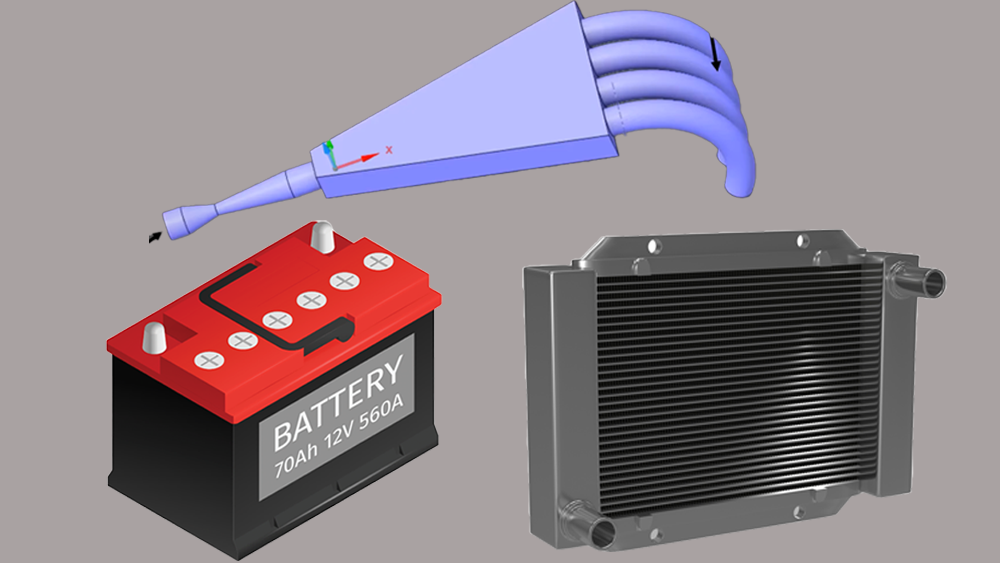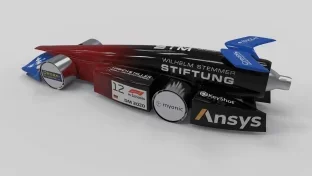
The cooling of components is a major part of any automotive design. Many components can fail if they overheat, so cooling systems are essential to maintain a functional operating temperature range. Formula SAE rules require intake restrictors on gas vehicles, and these components can be optimized using simulation. The radiator is the main part of the vehicle cooling system that helps keep the engine and other components from overheating. In electric vehicles, thermal battery cooling and management is essential to a battery’s life cycle and performance. Batteries heat up as they are used and are susceptible to overheating if a functional, properly designed cooling system is not present. In this course, students will learn how to perform computational fluid dynamics (CFD) and thermal analysis on various critical automotive components such as the air intake restrictor, radiator, battery pack, and battery management systems. Students will become familiar with the basics of performing thermal analyses to ensure components operate in their functional thermal range. Upon completion of this course, students will be able to leverage simulation to ensure their cooling systems produce acceptable operating temperatures for critical components.
A course completion badge allows you to showcase your success. With our badging platform, digital badges can be easily shared in email signatures, digital resumes, and social media profiles, helping you highlight your achievements. The digital image contains verified metadata that describes your participation in our course and the topics and skills that were covered. This badge is for successfully completing the Automotive Components Design: Fluids and Thermal course.
Alternate video link.
-
Cost: FREE
- Course Duration: 2-4 HOURS
- Skill Level: Student Teams
- Skills Gained: Automotive thermal design, Ansys Fluent, Ansys Discovery
No reviews available for this learning resource.









